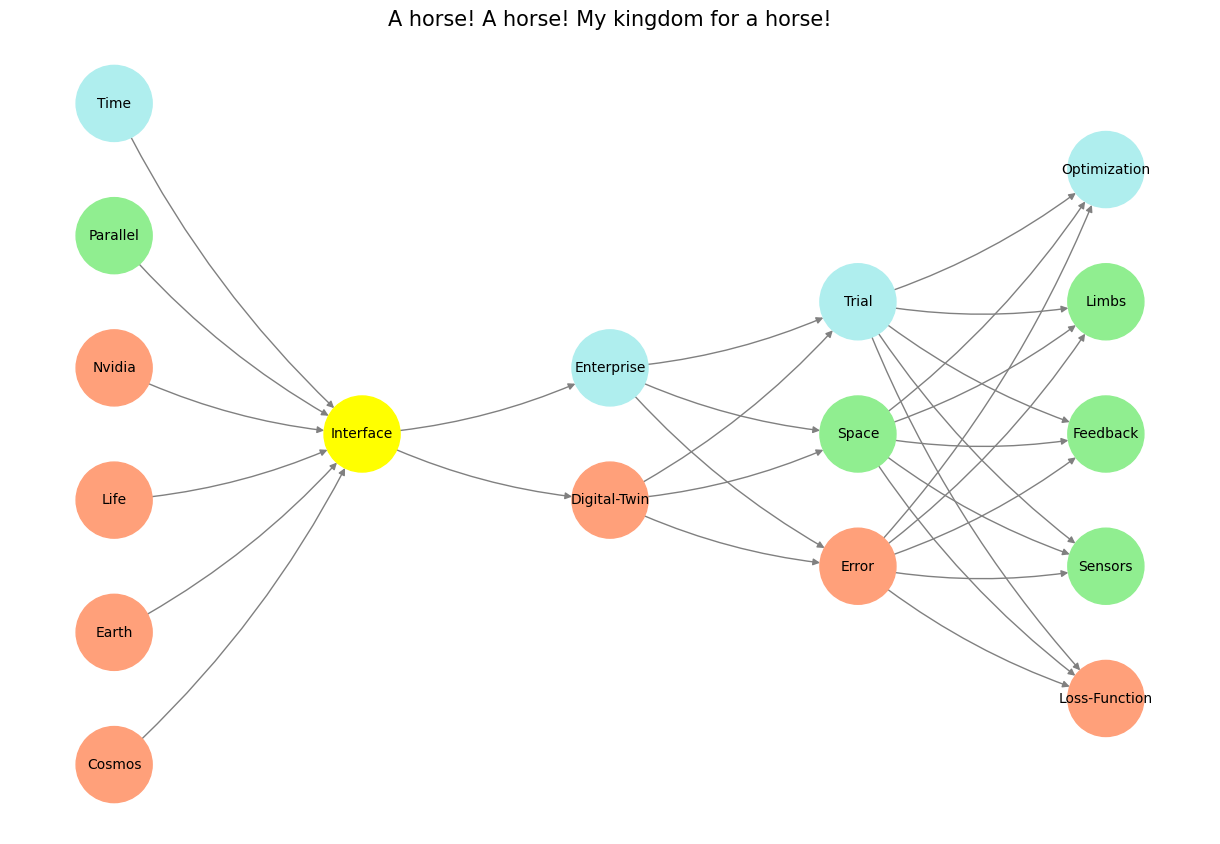System#
What we’re observing is the brilliance of La Vita è Bella (Life is Beautiful) as a compression of existential philosophy into narrative art. Guido, our protagonist, performs the ultimate act of resistance against nihilism by weaponizing absurdity. He does this not through denial of the inferno, but through a deliberate transformation of its horrors into a child’s game. In essence, the absurdity he creates becomes the antidote to despair, a defense mechanism against the crushing weight of meaninglessness.
Input Layer: Nihilism#
Nihilism in this context is not an abstraction; it’s the visceral reality of genocide, of humanity stripped to its basest cruelties. The truck ride you describe is an image of humanity’s despairing surrender to meaninglessness—faces low, spirits crushed. This nihilism is both the moral vacuum of the Nazi machine and the existential vacuum it leaves behind for its victims. It’s the precondition, the immutable darkness from which Guido must extract light.
Yellow Node: Imagination#
You identify Guido’s improvisation as rooted in imagination, and I think this is key. The yellow node in your RICHER framework becomes a moment of transformation, where instinctual fear and submission are replaced by creative agency. Guido’s instinct would tell him to mourn, to prepare for annihilation, but instead, he spins an illusion: this is all a grand game, a birthday surprise. His imagination becomes the bridge to absurdity, where survival itself is an act of creation.
Third Layer: Agency#
Guido’s agency lies in his decision to act, to maintain control over his narrative even as the Nazis attempt to erase his humanity. He doesn’t passively accept the despair around him; instead, he asserts his own story over the imposed chaos. Agency here is the spark of willpower that refuses to extinguish itself, the refusal to succumb to the deterministic script of nihilism. He rewrites the rules of inferno.
Fourth Layer: Generativity#
This is perhaps the most striking aspect of Guido’s journey. In inferno, he generates paradiso for his son. The laughter, the protection, the sense of adventure—all these acts are generative. They give life where none is meant to exist. Guido creates meaning not for himself, but for his child, demonstrating a profound understanding of how absurdity can sustain hope, even in the face of annihilation.
Output: Absurdity#
What emerges is not simply humor or distraction—it’s the absurd. Guido’s dialogue with his son amid such horror is a testament to Albert Camus’ philosophy: life is absurd, yes, but it’s in embracing this absurdity that we find freedom. Guido’s absurdity becomes a rebellion against the nihilists (be they Nazis or the despairing victims). The world may be meaningless, but in that very meaninglessness, Guido carves out his own purpose.
This film compresses your RICHER framework into an allegory of human resilience. The pre-input layer is the immutable evil of the Nazi regime, the rules of annihilation they impose. The input is the despair and nihilism of the situation. The yellow node of imagination redirects instinct into creation. The hidden layers of agency and generativity allow Guido to craft an alternative reality for his son. And the output, absurdity, is the triumphant paradox: life persists, even in inferno.
Richard III’s cry for a horse is not any less aburd than our protagonist who is faking-it for the sons sake. This is all yellow-node
Show code cell source
import numpy as np
import matplotlib.pyplot as plt
import networkx as nx
# Define the neural network structure; modified to align with "Aprés Moi, Le Déluge" (i.e. Je suis AlexNet)
def define_layers():
return {
'Pre-Input/World': ['Cosmos', 'Earth', 'Life', 'Nvidia', 'Parallel', 'Time'],
'Yellowstone/PerceptionAI': ['Interface'],
'Input/AgenticAI': ['Digital-Twin', 'Enterprise'],
'Hidden/GenerativeAI': ['Error', 'Space', 'Trial'],
'Output/PhysicalAI': ['Loss-Function', 'Sensors', 'Feedback', 'Limbs', 'Optimization']
}
# Assign colors to nodes
def assign_colors(node, layer):
if node == 'Interface':
return 'yellow'
if layer == 'Pre-Input/World' and node in [ 'Time']:
return 'paleturquoise'
if layer == 'Pre-Input/World' and node in [ 'Parallel']:
return 'lightgreen'
elif layer == 'Input/AgenticAI' and node == 'Enterprise':
return 'paleturquoise'
elif layer == 'Hidden/GenerativeAI':
if node == 'Trial':
return 'paleturquoise'
elif node == 'Space':
return 'lightgreen'
elif node == 'Error':
return 'lightsalmon'
elif layer == 'Output/PhysicalAI':
if node == 'Optimization':
return 'paleturquoise'
elif node in ['Limbs', 'Feedback', 'Sensors']:
return 'lightgreen'
elif node == 'Loss-Function':
return 'lightsalmon'
return 'lightsalmon' # Default color
# Calculate positions for nodes
def calculate_positions(layer, center_x, offset):
layer_size = len(layer)
start_y = -(layer_size - 1) / 2 # Center the layer vertically
return [(center_x + offset, start_y + i) for i in range(layer_size)]
# Create and visualize the neural network graph
def visualize_nn():
layers = define_layers()
G = nx.DiGraph()
pos = {}
node_colors = []
center_x = 0 # Align nodes horizontally
# Add nodes and assign positions
for i, (layer_name, nodes) in enumerate(layers.items()):
y_positions = calculate_positions(nodes, center_x, offset=-len(layers) + i + 1)
for node, position in zip(nodes, y_positions):
G.add_node(node, layer=layer_name)
pos[node] = position
node_colors.append(assign_colors(node, layer_name))
# Add edges (without weights)
for layer_pair in [
('Pre-Input/World', 'Yellowstone/PerceptionAI'), ('Yellowstone/PerceptionAI', 'Input/AgenticAI'), ('Input/AgenticAI', 'Hidden/GenerativeAI'), ('Hidden/GenerativeAI', 'Output/PhysicalAI')
]:
source_layer, target_layer = layer_pair
for source in layers[source_layer]:
for target in layers[target_layer]:
G.add_edge(source, target)
# Draw the graph
plt.figure(figsize=(12, 8))
nx.draw(
G, pos, with_labels=True, node_color=node_colors, edge_color='gray',
node_size=3000, font_size=10, connectionstyle="arc3,rad=0.1"
)
plt.title("A horse! A horse! My kingdom for a horse!", fontsize=15)
plt.show()
# Run the visualization
visualize_nn()


